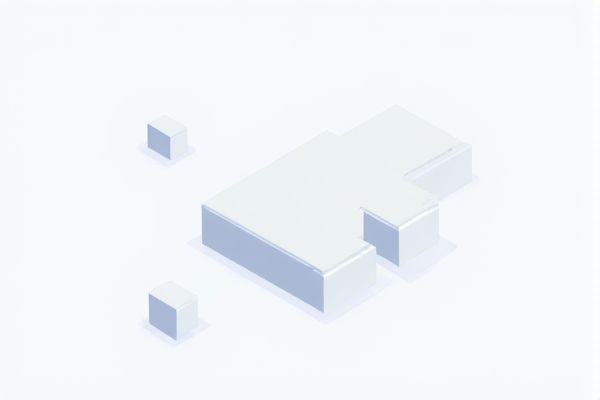
Discover endless creativity with this online random shape generator for CSS, designed to effortlessly create unique and customizable shapes for your web projects. Adjust parameters to instantly generate dynamic designs that enhance visual appeal and user engagement. Transform your CSS development process with a simple, intuitive tool that combines innovation and convenience.
Online tool for random shape generator css
Here are several samples of a random shape generator CSS we've prepared for you to use and randomize easily. You can also enter your own list of shapes to customize the output. With a single click, you'll receive a randomized list and one value ready to implement.Data Source
Single Result
Multiple Results
Introduction to Random Shape Generation in CSS
Random shape generation in CSS utilizes properties like clip-path, border-radius, and transforms to create dynamic, unpredictable shapes directly in the browser. Techniques often involve CSS variables and keyframe animations to introduce randomness and variation without JavaScript. This approach enhances visual diversity and interactivity while maintaining efficient, scalable web designs.
Benefits of Using Random Shapes in Web Design
Random shape generators in CSS enhance web design by introducing unique, dynamic visuals that improve user engagement and create memorable brand identities. Utilizing algorithmically generated shapes reduces design time and fosters creative experimentation without relying on static graphics. This approach also boosts website responsiveness and performance by leveraging lightweight, scalable CSS code instead of heavy image files.
Core CSS Properties for Shape Creation
Core CSS properties like `clip-path`, `border-radius`, and `transform` are essential for creating random shapes in CSS, allowing developers to define custom polygons, circles, and skewed shapes. The `clip-path` property supports various shape functions such as `circle()`, `ellipse()`, and `polygon()`, enabling intricate and dynamic shape designs by specifying exact coordinates. Combining these with CSS variables and animation properties enhances randomness and interactivity in shape generation, making the visual output highly customizable and responsive.
Leveraging CSS Clip-Path for Shape Variety
CSS clip-path enables the creation of diverse random shapes by defining custom polygon coordinates, circles, ellipses, or insets that dynamically alter element outlines. Leveraging clip-path with CSS variables or JavaScript enhances shape variety by randomly adjusting vertices or parameters, producing unique visual effects without images. This method optimizes performance and responsiveness, making it ideal for creative UI designs and interactive web elements.
Utilizing CSS Border-Radius for Abstract Forms
Utilizing CSS border-radius properties enables the creation of unique random shapes by adjusting individual corners and applying percentage values for fluid curves. Combining multiple border-radius values with rotations and transforms generates complex abstract forms without relying on images or SVGs. This approach enhances web design flexibility and performance by leveraging pure CSS for visually engaging, scalable shapes.
Adding Interactivity with CSS Animations
CSS animations enhance random shape generators by adding dynamic interactivity, allowing shapes to morph, rotate, or change colors seamlessly. Utilizing keyframes and transition properties, developers can create visually engaging effects that respond to user interactions like hover or click. Integrating CSS variables and animation delays further enables unique, non-repetitive movement patterns, boosting the appeal and responsiveness of randomly generated shapes.
Dynamic Shape Generation with CSS Variables
Dynamic shape generation with CSS variables enables developers to create versatile and responsive designs by manipulating properties like width, height, border-radius, and colors in real-time. CSS variables allow for seamless adjustments to shape dimensions and visual attributes without rewriting the entire code, promoting maintainability and scalability. Utilizing CSS custom properties in random shape generators enhances creativity by enabling dynamic and interactive user interfaces.
Integrating JavaScript for Enhanced Randomness
Integrating JavaScript into a random shape generator CSS significantly enhances the randomness and variety of generated shapes by dynamically altering properties such as size, color, and border-radius. JavaScript functions can manipulate CSS variables or styles in real time, enabling the creation of unique and unpredictable geometric patterns that pure CSS alone cannot achieve. This integration allows developers to combine the power of DOM scripting with CSS styling for more interactive and visually compelling shape generators.
Responsive Design Considerations for Random Shapes
Responsive design for random shape generators in CSS must ensure shapes adjust fluidly across diverse screen sizes and resolutions, leveraging relative units like percentages and viewport dimensions (vw, vh). Media queries play a crucial role in modifying shape properties such as size, position, and border-radius dynamically to maintain visual balance and accessibility. Optimizing CSS animations and transformations based on device capabilities enhances performance while preserving the aesthetic integrity of random shapes on mobile and desktop interfaces.
Creative Examples of Random CSS Shapes in the Wild
Creative examples of random CSS shapes in the wild showcase diverse geometric forms generated through properties like clip-path, border-radius, and transforms. Developers leverage variations in polygon points, gradients, and animations to produce dynamic, unique shapes that enhance user interfaces and digital art. These innovative implementations highlight the flexibility of CSS for generating visually engaging, unpredictable shapes without relying on images or SVGs.
 azrandom.com
azrandom.com